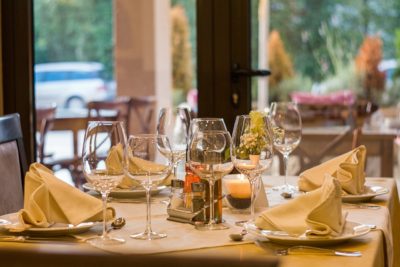
When writing a novel leaning heavily on suspense, nothing is more important than structure. At the most basic level for a reader, tension is developed by the desire to learn something new about a main character or the plot. Good structure can aid the author in releasing details gradually to leave readers satisfied by the end of a story.
Think of structure like cropping a photograph. While on vacation you snap a massive landscape shot, but when publishing it on Facebook or Instagram you decide to tighten the frame to only show your posed group of friends. Not that the landscape wasn’t part of your vacation, but an effective frame (like a book structure) ensures the focus is on the best parts of your story.
Herman Koch’s The Dinner is a bestselling thriller originally published in The Netherlands, but has grown so popular it’s been translated into multiple languages and adapted into two films, one starring Richard Gere.
In the novel two couples meet for dinner at an upscale restaurant in Amsterdam to discuss their children’s troubling behavior. Major themes of the work include how far parents will go to protect their children, the jarring effect of family secrets, and the hereditary nature of violence (all fascinating topics to explore as you read it).
What’s useful from a craft perspective is how Koch structured the book. The immediate action all takes place at the restaurant and he separates the night in order of how their meal is served:
- Aperitif
- Appetizer
- Main Course
- Dessert
- Digestif
This structure kept the reader grounded in the tension around the dinner table and allowed Koch to dole out juicy tidbits as if he was the waiter bringing a new dish, each as delicious as the last. Once a good structure is settled, an author is liberated to fill in the blanks about what’s happening to the characters.
The book’s narrator Paul Lohman is unreliable and it’s clear from the first course he’s hiding something. (SPOILER ALERT: He’s hiding a horrifying thing his son did with his cousins in an ATM cubicle). Paul decides to cover up for his son and does everything he can to forget the ordeal.
“Without knowing glances – without winks – there was in fact no secret: that was my reasoning. It might be hard for us to put the events in the cubicle out of our minds, but in the course of time they would start to exist outside us – just as they did for other people. But what we did have to forget was the secret. And the best thing was to start forgetting as soon as possible.”
Self-denial and desperation are at the heart of Paul’s motives in the story, but as circumstances grow more complex, simply forgetting what happened doesn’t work as he’d planned.
Besides the conversations happening in real-time at dinner, Koch uses flashbacks from Paul’s perspective (in themselves unreliable) to bring readers up to speed. Some of the flashbacks are as recent as that afternoon, others years in the past when Paul taught high school history.
Good structure can make or break any story, and once established helps the author be thoughtful and methodical about how he or she reveals secrets to the reader. Pick up a copy of The Dinner and see how flawlessly Koch balances these concepts in his brilliant novel.

Charlene Edge
I love this post, especially so because, although I have not read Koch’s book, I did see the movie–don’t you hate it when people say that? Books and movies are such vastly different storytelling paths! But I think the movie’s structure did a good job with revealing, in dribs and drabs, the story as you describe it.
Thanks for your thoughtful, easy-to-read, and informative writing!
Mckenzie Cassidy
Thanks! And I never saw the movie, but I have no issue with people who take that path. Fight Club, for example, was a much better movie and I saw it first before reading the book.
Niki Kantzios
Thanks for the reminder of the importance of structure… but also for the reading tip. Can’t wait to read it! I love the idea of dividing the book like a meal!